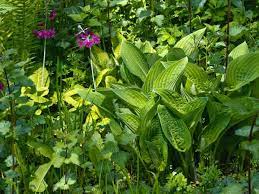Last Updated on April 10, 2024 by Real Men Sow
Bog plants add a vertical accent in water gardens, whether they are in shallow or deep water. The form, size, and texture of these aquatic plants can vary greatly. They can be used to conceal tubing, liners, or power cords at the edges of the pond. They make a striking display in the middle of the pool when they are planted in deep water in large containers.
This group of plants is used to accent a water garden with seasonal flowers or all-season foliage accents. The plants will remain healthy and vigorous if they are properly cared for. These plants can grow year after year, provided that they are properly cared for and re-potted as necessary.
Planting the Bog Plants
The soil should be loosely filled into the pot. Next, add the fertilizer tablets to the soil’s bottom half and cover it with soil. Add a little soil to cover the roots. To anchor the plant, gently compress the soil. To add small gravel or fish protection, leave about half an inch at the top. Use larger stones or a Plant Protector if you have large fish ponds. Avoid covering any growth tips with stones, as this can hinder growth.
Planting Containers
To allow the bog plants to grow and blossom freely, plant in as big a container as you can. Plants with spreading root systems may require adequate soil depth but sufficient surface area. Some plants have dense clumping habits that require less surface area. Place a potted plant on a shelf and adjust the depth of the pot to meet the requirements.
Bog Plant Shelf for Direct Planting
Reduce the number of shelves used for potted plants when building a pond. Instead, create planting pockets for bog plants at the pond’s edge. The size of the planting areas may vary from a small area to a large one.
General Bog Plants Care Instructions
If properly planted, new growth will quickly begin. Many leaves shipped to be planted will die within a few days and will be replaced with new foliage. A layer of lightweight cloth can be used to protect the plants from the sun for a few days. The plants will need to be maintained as any perennial once they have begun to grow.
Pruning & Deadheading
To achieve the best appearance, remove all leaves and flowers once they turn yellow or brown. You can cut or pinch them and then throw them away. For floating leaf plants, follow the stem until it reaches the soil level and then pinch. This encourages flower growth.
End of Season Care
The leaves begin to die faster than they were being produced as the autumn season ends. Therefore, new leaves are being taken out faster than the old ones. The leaves will gradually become less dense until there are no more. It is sometimes better to let some of the dying leaves dry to create winter texture and foliage effects.
Soil
High quality soil is essential for the establishment of high-quality plants. Subsoil, gravel or sand can be used in place of topsoil. This will reduce growth and make plants more susceptible to being eaten by large or aggressive fish. The best potting medium is soil from a lawn, vegetable garden, or flower bed. You can filter out any organic materials that might float to the surface.
Fertilization
A good soil is essential, but fertilization with tablets will ensure healthy and flowering plants. Weak growth can lead to poor plant performance.
Water depth
Check the water requirements for each plant and then place it at the appropriate water level. Place the plant directly in the soil or into the pot. Then, lower the pot into the pond gently. To reduce the muddying of the water, lower the pot slightly.
Winter
As with other herbaceous perennials, the stems and leaves should be dead by winter. If plants are placed in a bog, they should not be disturbed except for the removal of any fallen leaves.
Potted plants can be dropped to deeper water if necessary, but they must be brought up again in the winter to ensure that any growth is possible. Plants can be left alone in Zone 6 or higher without any movement. If the plant is to be submerged in water, all dead growth must be removed.
Repotting
To keep soil fresh and strong, container-grown aquatic plants must be repotted every 2 to 3 years. It can also be re-potted if the plant has reached the edge of its pot or broken through it. It is okay to allow the plant to grow out of the pot, but it can be difficult to fertilize and top-heavy.

